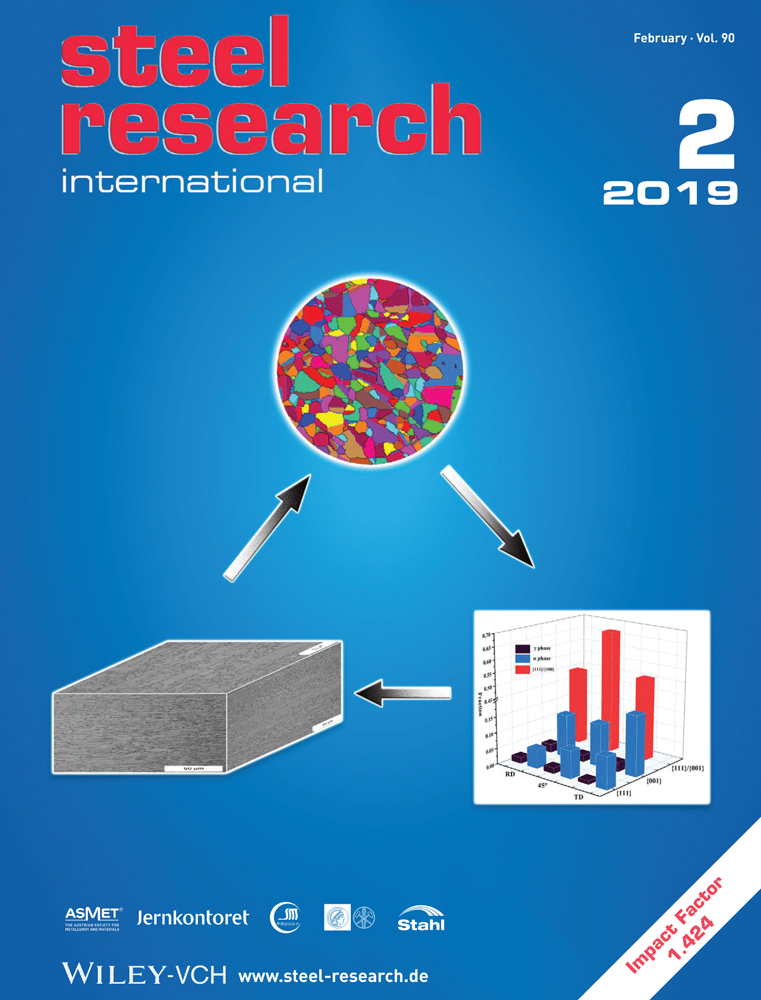Microalloying Precipitation during Hot Rolling of Seamless Tubes in a Continuous Mandrel Mill
Abstract
Conventional controlled rolling is widely used in a hot strip mill and requires the occurrence of strain-induced precipitation before that any recrystallization process takes place. On the other hand, microalloying elements dissolved in the austenite can have a strong effect on hardenability. These aspects show how important is the knowledge on the precipitation evolution and the remaining thermodynamic driving force in each step of hot rolling. This is particularly true for seamless tube production that have some specific characteristics such as: longer transfer times between roughing and finishing, the possibility of promoting one transformation cycle before finishing, lower deformation at finishing steps, no accelerated cooling, etc. In this work, hot torsion simulation was applied on a real case of seamless tube production and the samples were investigated by transmission electron microscopy. The particles size distributions were accessed by high angle annular dark field, and typical precipitates were characterized by EDX, PEELS, and EFTEM. Thermo-Calc software was used to evaluate the precipitation and the amounts of microalloying elements that remains dissolved in austenite.
Conflict of Interest
The authors declare no conflict of interest.




